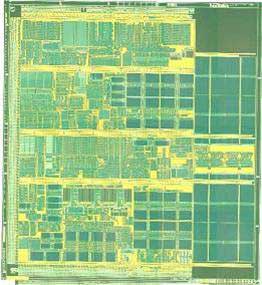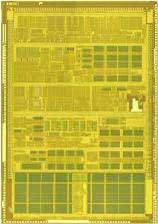AMD's 0.13-micron Thoroughbred - Cool but Slipping at 2200+
by Anand Lal Shimpi on June 10, 2002 2:55 AM EST- Posted in
- CPUs
How does AMD do that voodoo they do so well?
For several months after Intel introduced the Pentium 4 you'd be silly to even consider purchasing the processor. Performance aside, the Pentium 4 was a very expensive processor to own and in the end it didn't come down to paying for the Intel name but it was due to the fact that it was an expensive processor to manufacture. What factors influence CPU manufacturing cost?
1) The number of useable/good CPUs on a single silicon wafer (yield)
2) The size of the die being manufactured
3) The manufacturing process being used
4) The size of the wafer that the dice are being produced on
5) The cost of packaging the CPU (everything that goes along with connection the silicon to the pins on the packaged CPU)
Intel's Pentium 4 core is quite large and going forward there will be even more features tacked onto the core. By this time next year Prescott will be readying for release with a full 1MB L2 cache on the processor die itself. Large caches are easily the biggest consumers of transistors and die space on today's CPUs. Intel's solution to dealing with their large processors is to quickly transition to smaller manufacturing processes and move to larger silicon wafers (thus yielding more chips per wafer). This is exemplified by Intel's early transition to a 0.13-micron manufacturing process, Intel's commitment to ship Prescott on a 0.09-micron process and the move to 12" wafers.
AMD takes a different approach that suits their needs and abilities better. The Athlon XP and even the forthcoming Hammer processors both have a very small die size, a benefit of being devoid of any trace caches among other things. AMD is a bit late to the 0.13-micron game as Intel has been producing on the process since January of this year, but they're finally making their way along. AMD won't have the ability to move production to 12" wafers until 2005 forcing die sizes to remain relatively small in the near future for most mainstream parts.
|
Palomino
|
Thoroughbred
|
 |
 |
Palomino vs. Thoroughbred, Intel's Northwood is bigger than both.
AMD's ability to offer much lower prices than Intel for their highest end parts comes with their small die sizes; by not adding any features to the Athlon XP processor when transitioning to the 0.13-micron Thoroughbred core, AMD buys themselves much more room to adjust prices. This means that Thoroughbred Athlon XP processors won't necessarily be noticeably cheaper to purchase immediately, but if necessary AMD can drop prices a bit more aggressively now.
The downside to this, as we mentioned at the start of this article, is that these new Athlon XPs don't perform any differently from their predecessors.










0 Comments
View All Comments